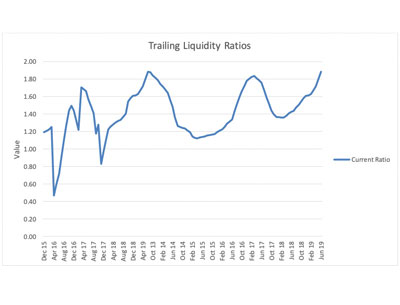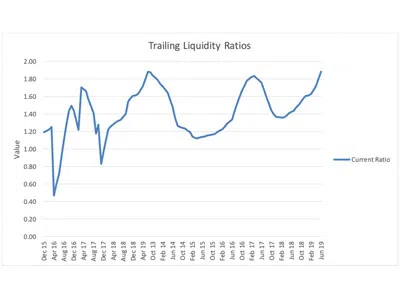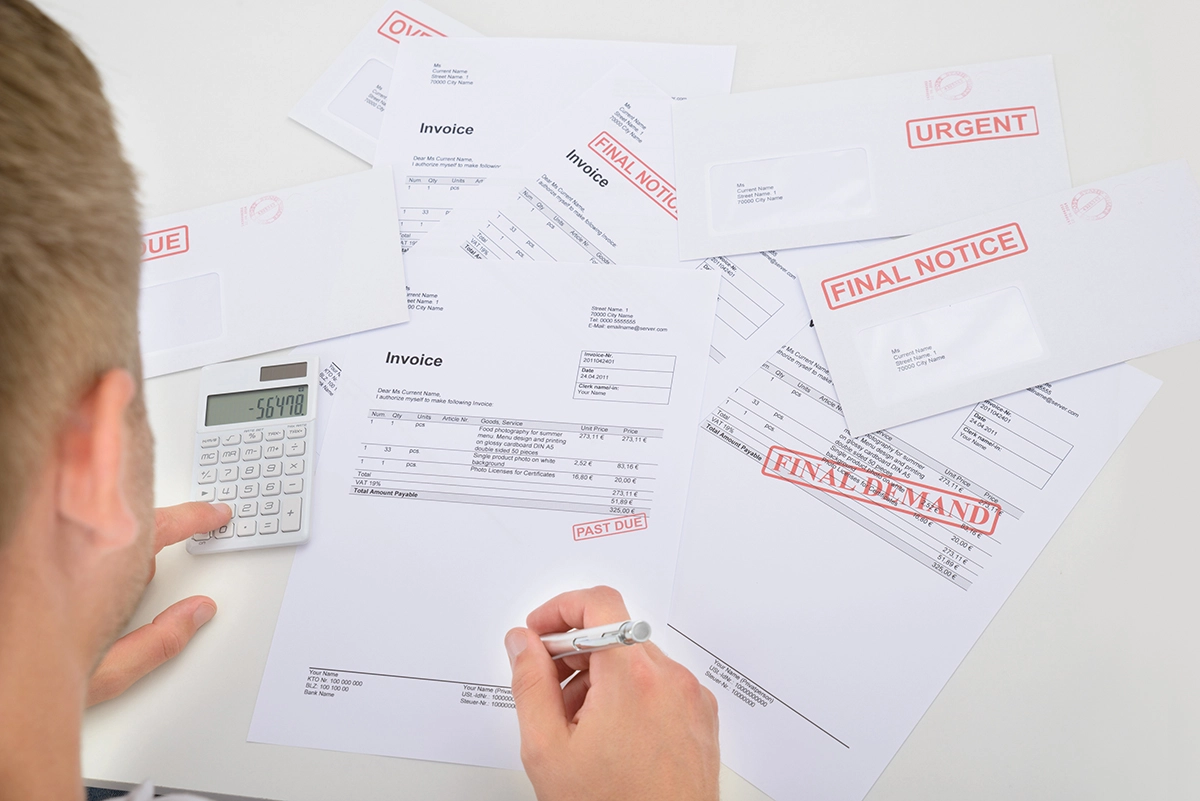This is the rule that tells you whether your company is becoming more profitable (most of the time).
Generally, an increasing current ratio generally means increasing profitability. A decreasing current ratio generally means decreasing profitability. The only times this generally is not a measure of profitability is when your company has large cash withdrawals for tax payments or large deposits from loans (i.e. PPP loans) or asset purchases such as vehicles.
For tax payments cash, a current asset is decreasing without any decrease in current liabilities. Therefore, the current ratio decreases. The opposite is true for large loans (i.e. PPP loans that were received by many contractors). In this case, cash was received and the loan is a long term liability. Nothing happened to current liabilities so the current ratio increased.
For vehicle purchases, the company is “trading” short term assets (i.e. cash) for long term assets (i.e. a vehicle). Current liabilities remain constant so the current ratio decreases. This decrease is not due to less profitability. It happened because of an asset purchase.
Current ratio is calculated:
Current assets
Current liabilities
 Figure 1 shows the graph of the data. The trailing graph shows the seasonality of the company — profit increase in busy times and decrease in slower times. The overall trend, however, is upward (i.e. more profitable).
Figure 1 shows the graph of the data. The trailing graph shows the seasonality of the company — profit increase in busy times and decrease in slower times. The overall trend, however, is upward (i.e. more profitable).
On a monthly review of the financial statements, you can’t tell that the company is losing profitability. Only when you look at the current ratios on a long-term trend can you see that the company must become more profitable each month to survive for the long term.
Here is the story of one contractor:
This husband and wife team grew their business to more than $3 million in revenues by only looking at sales numbers and cash. When it got to the point they could no longer manage the business without managers and financials, they begrudgingly got managers and I helped them straighten out the financial side of their company.
But, they never paid attention to them. There were always more pressing needs. After begging for financial statements for five months I finally receive them at the end of May. Table 1 is the current ratios for the five months that I got all at one time.
The current ratio was less than one, and going down significantly each month. They were in financial trouble and didn’t know it until it was too late to do much about it.
Had the current ratio been monitored in January and at the latest, in February, actions could have been taken to reverse the downward trend. Now a cash crisis existed when it could have been prevented.
Get your financial statements every month and calculate your current ratio every month. Your company’s current ratio should be monitored monthly. It should always be greater than one. It should be constant or trending upward.
The only times downward current ratios are acceptable is if the company paid a huge tax bill or purchased assets using cash rather than a loan. In these cases cash decreases and current liabilities remain the same causing the current ratio to decrease. Increasing current ratio means increasing wealth.
This column concludes the Laws of Profit and Wealth. As a recap, here they are. You can find the details in the previous columns or in my new book, “Profit or Wealth? Simple Rules for Sustainable Business Growth.”
Laws of Profit
- Live, Eat, and Breathe Net Profit Per Hour
- Discover True Cost
- Price for Profit
- Consistent Gross Margins
- Continuous Profits are Critical
- Build Recurring Revenue — from a P&L perspective
- Profit and Cash are not the same
- Review timely, accurate financial statements each month
- Inventory is a bet
- You can’t take a percentage to the bank
Laws of Wealth
- Pay attention to your balance sheet — Balance sheets build wealth
- Separate business from personal — don’t use your business checkbook as a personal checkbook — pay for vacations out of personal cash; pay for personal things personally
- Build Recurring revenue — from a wealth perspective
- Build a great culture and a business not dependent on you
- Monitor your cash
- Save Cash
- A Sound collection policy — receivable days
- A Sound inventory policy — inventory days and acid test
- A Sound debt policy — Long term debt to equity no greater than one
- Increasing current ratio


 Figure 1 shows the graph of the data. The trailing graph shows the seasonality of the company — profit increase in busy times and decrease in slower times. The overall trend, however, is upward (i.e. more profitable).
Figure 1 shows the graph of the data. The trailing graph shows the seasonality of the company — profit increase in busy times and decrease in slower times. The overall trend, however, is upward (i.e. more profitable).



